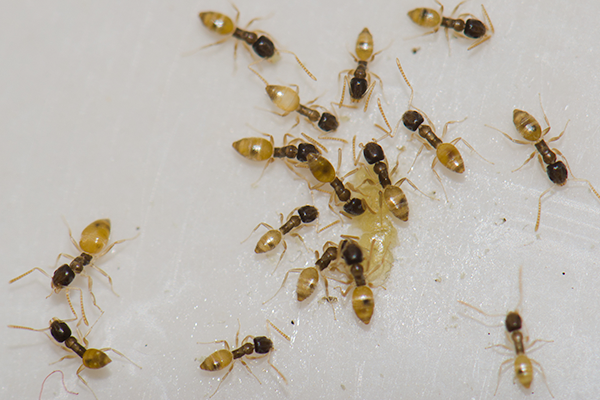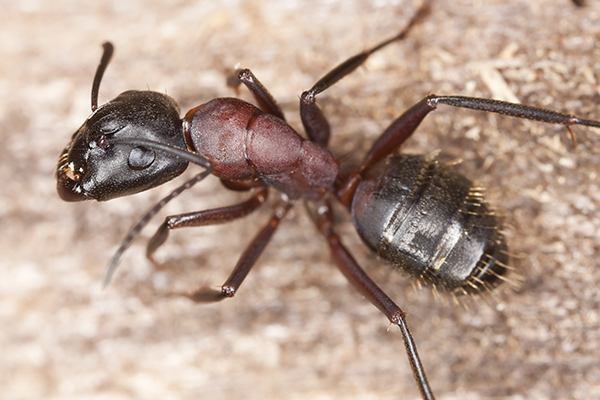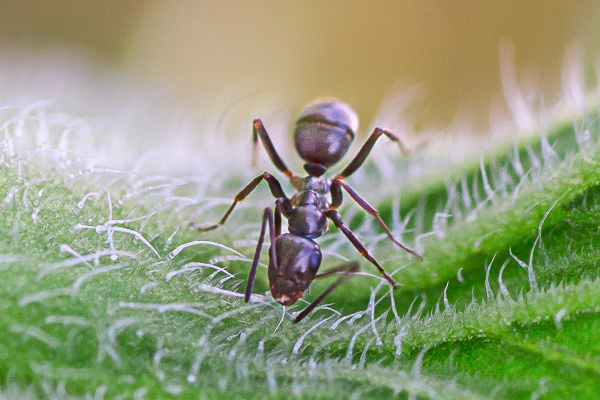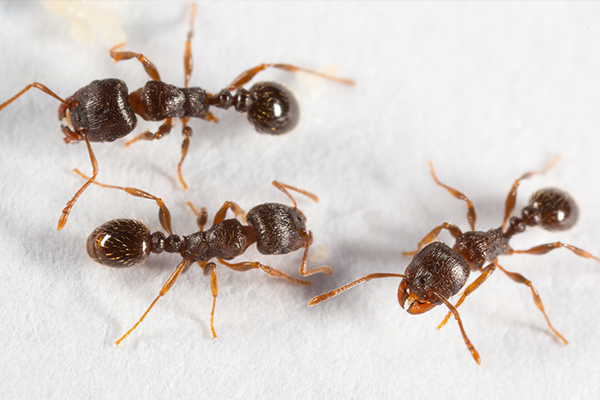What types of ants are most common in Virginia?
Ants live throughout the entire United States, living and work together in large colonies. Ants are common household invaders and are very difficult to eliminate from homes and properties without professional help completely. Some of the most common ants in Virginia include Argentine ants, carpenter ants, odorous house ants, pavement ants, and red imported fire ants.

Argentine Ants
Argentine Ants are a small species and are usually either shiny dark brown or shiny black. Their segment body is oval-shaped. Their most identifying feature is the vast colonies that this species creates. A single colony can have thousands and thousands of workers and hundreds of queens living and working together.

Carpenter Ants
Carpenter ants are one of the largest species of household invading ants found living in the United States. Carpenter ants are most commonly black but can be a combination of black, red, and yellow. Carpenter ants typically create their main nest outside. Still, after entering into a home while foraging for food, they may decide to build satellite nests inside of structural wood - being particularly drawn to water-damaged or decaying wood.

Odorous House Ants
Odorous house ants are a very small species of ant that produces a very unpleasant odor. When crushed, odorous house ants emit a very foul smell similar to the smell of a rotting coconut. Odorous house ants are a very small species of ant, and they range in color from dark brown to black.

Pavement Ants
Pavement ants get their name because of their habit of creating their nests in the cracks of pavement or cement. You can find pavement ants invading Virginia homes. Adults are brown to black, and their heads, body, and thorax have grooved parallel lines. Another identifying feature is that their thorax has a small pair of spines extending from their hind end.

Red Imported Fire Ants
Red imported fire ants are most well-known for being extremely aggressive; they sting anything they encounter or view as a threat. This is a small species of ant, and they are darkish-red in color. This species of ant typically builds large nesting mounds in open sunny areas.
Are ants dangerous?
Ants are considered dangerous to people for a couple of different reasons. They can carry bacteria and parasites on their legs and bodies, contaminate food and surfaces and make people ill. Also, some species of ants, like red imported ants, can inflict painful stings and bites, making them a danger to people.
Will ants damage my house and property?
Most of the time, ants that have invaded your home are considered nuisance ants and won’t damage the structure of your home and property. However, some species of ants, like the carpenter ant, cause damages to the structures of homes and other buildings that they have decided to invade. Carpenter ants can damage structural wood, flooring, molding, trim, and personal belongings like wooden furniture. In addition to structural damage, many species of ants can create unsightly mounds of dirt (nests) in your otherwise green and healthy lawn.
What's the difference between carpenter ants and termites?
Two species of household invading insects often mistaken for one another are the carpenter ant and the termite. But, it is crucial to understand that while both are destructive, they are two different insect species. Termites actually feed on the wood that they have invaded and are tunneling through, while the carpenter ant does not feed on the wood. Carpenter ants invade the inside of structural wood to create new nesting galleries to help expand their colony. Winged termite and termite swarmers (winged termites) look very similar, so to help you tell them apart, we have listed some of their more obvious differences below:
-
Termites have straight antennae while the carpenter ant’s antennae are bent.
-
Carpenter ants and termites both have two pairs of wings-front wings and back wings. The termite’s front and back wings are the same lengths, while the carpenter ant’s back wings are much shorter than their front wings.
-
Termite wings are twice as long as their body.
-
Carpenter ants have a pinched waist, while the termite’s waist is straight.
Why do I have an ant problem?
Ants live in, on, or near properties and homes that offer easy access to their basic needs. Unsecured garbage, garden, compost piles, and pet food can all attract ants to a property. Once on your property, leaky pipes, fixtures, crumbs in the kitchen, even decaying wood will make it so they won’t want to leave. Also, many species of ants often invade homes when the weather outside makes it so they can’t live comfortably; weather that is too hot, too dry, or too wet will cause ants to want to move indoors to reap the benefits of your climate-controlled home.
How do I get rid of ants?
To eliminate ants from your home and property, you need to know the species of ants to implement a treatment specific to the invading species. Ants can look very similar. Seeking professional help is the best way to ensure the identity is correct, finding the nesting areas, and applying the necessary treatment. It may be tempting to try and treat an ant infestation on your own using products bought from big box stores, but DIY ant control doesn't typically work. It doesn't matter what you do. If you don't find and eliminate the source of the ant problem, they will continue to come back.
What's more, DIY treatments used improperly or on the wrong pest may cause the problem to grow worse and move to other parts of your home or business. Contact the ant control professionals found at All Pest Control & Solutions to completely take care of an ant infestation. Serving Salem and the New River Valley areas, our professionals will inspect your property, develop a plan of action and then implement it! The result – 100% satisfaction guaranteed ant control for your property.
Does All Pest Control have any ant prevention tips?
Preventing ants from finding their way onto your property and into your home can be difficult, but there are a few things you can do inside and outside to help deter these household invading pests.
Indoor Ant Prevention Tips:
-
Store food (including pet food) inside of the refrigerator or in air-tight containers.
-
Quickly clean up crumbs and spills in kitchen and pantry areas.
-
Routinely vacuum your entire home and wash dishes daily.
-
Install de-humidifiers in basement areas to reduce moisture levels in your home; remove any wood from your home damaged by water.
Outdoor Ant Prevention Tips:
-
Make sure that outdoor trash cans are stored away from the outside of your home and that they have tight-fitting or locking lids on them.
-
Place woodpiles up off the ground, trim back trees, bushes, and shrubs outside your home.
-
Quickly pick up fruits or vegetables that have fallen to the ground in garden areas.
-
Seal cracks and crevices found in your home’s foundation and exterior walls; place door sweeps underneath all exterior doors.
Additional Ant Articles
Problems Ants Bring To Virginia Homes
Benefits Of Professional Ant Control For Virginia Homeowners
Christianburg's Step-By-Step Guide To Ant Control
Residential Services

Home Pest Control
Convenient for your schedule & effective against pests, our Home Protection plans protect your home and family!
Learn More >

Bed Bug Control
Innovative bed bug treatments designed to quickly, effectively and discreetly solve homeowners' bed bug problems.
Learn More >

Termite Control
All Pest's effective termite control treatments prevent wood-destroying termites from causing damage to your home.
Learn More >

Rodent Control
Get rid of rats and mice in your home with a comprehensive rodent control solution from All Pest.
Learn More >

Moisture Control
Using moisture control can help you avoid potential issues in your home, such as mold, wood rot, and termites.
Learn More >

Mosquito Control
Rid your property of those irritating, biting mosquitoes with All Pest's seasonal mosquito control.
Learn More >

Real Estate Inspections
All Pest Control's technicians are certified to identify and report signs conducive to wood-destroying insects.
Learn More >


